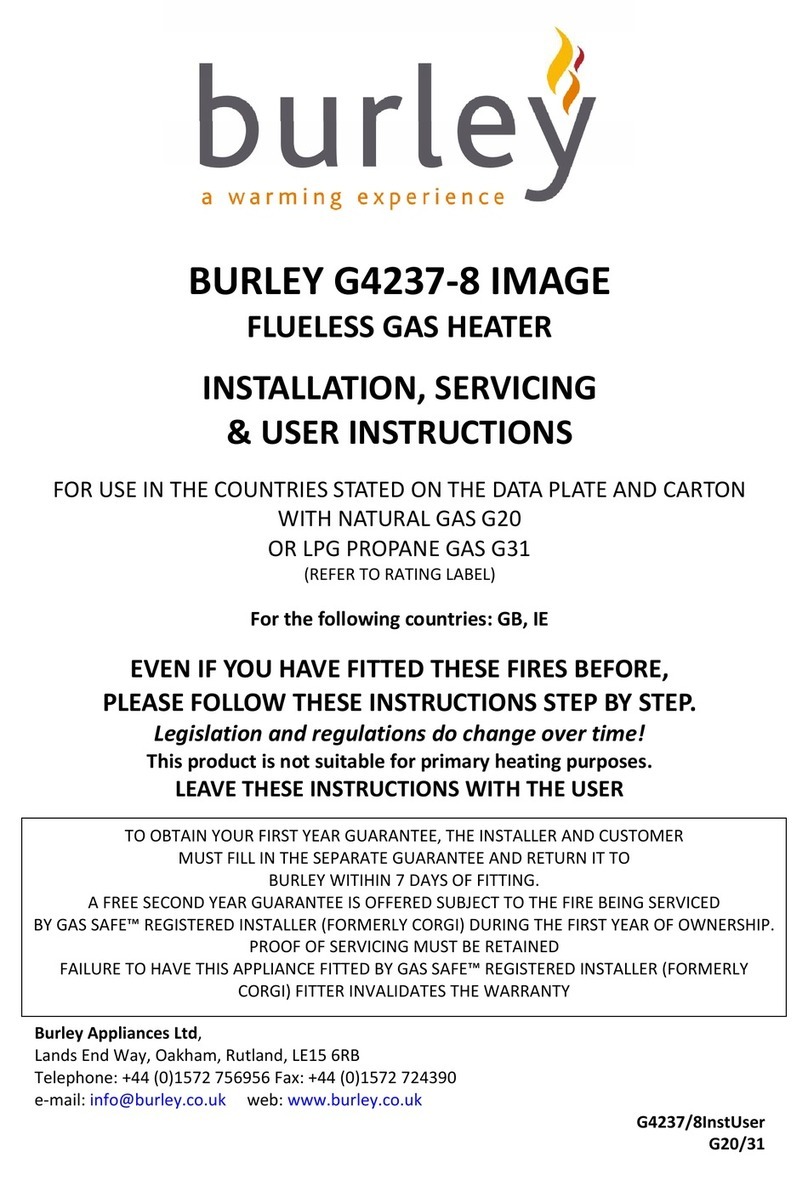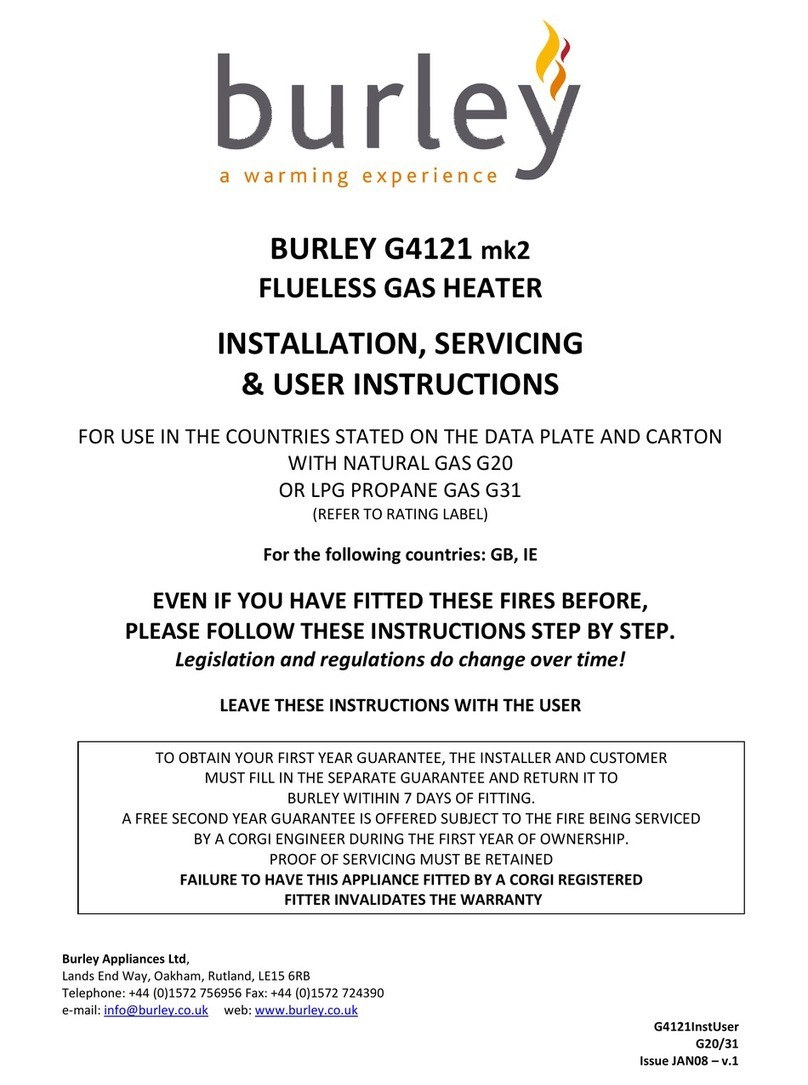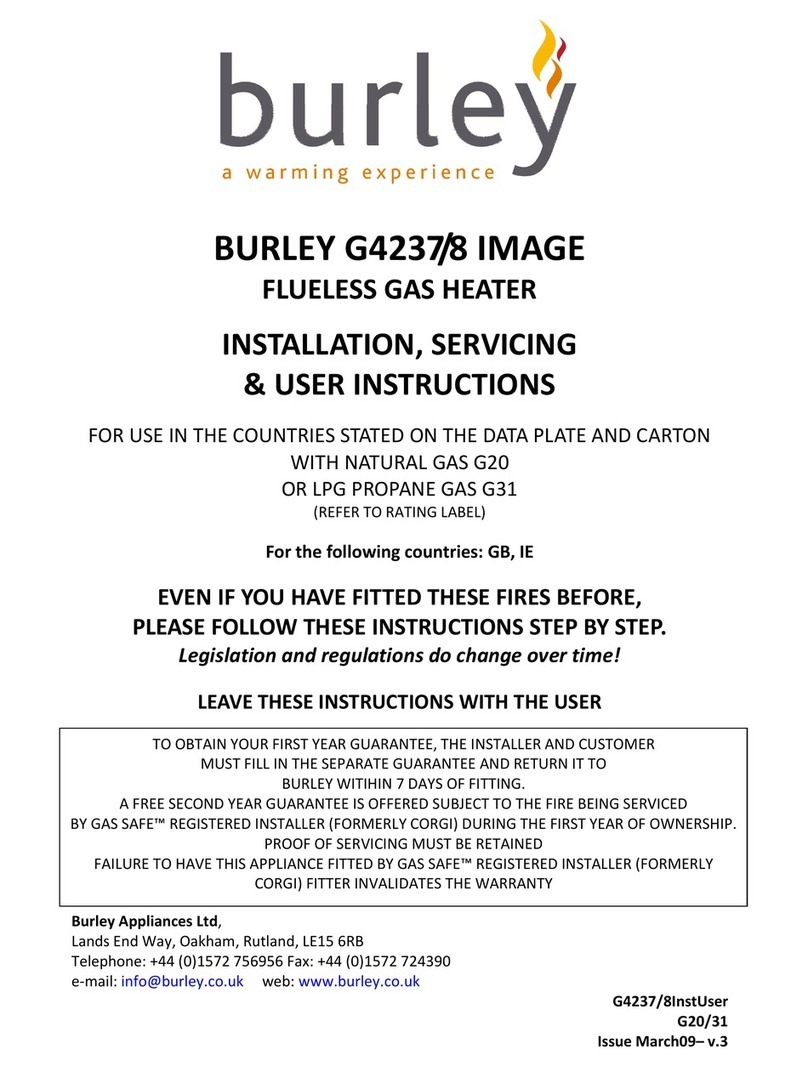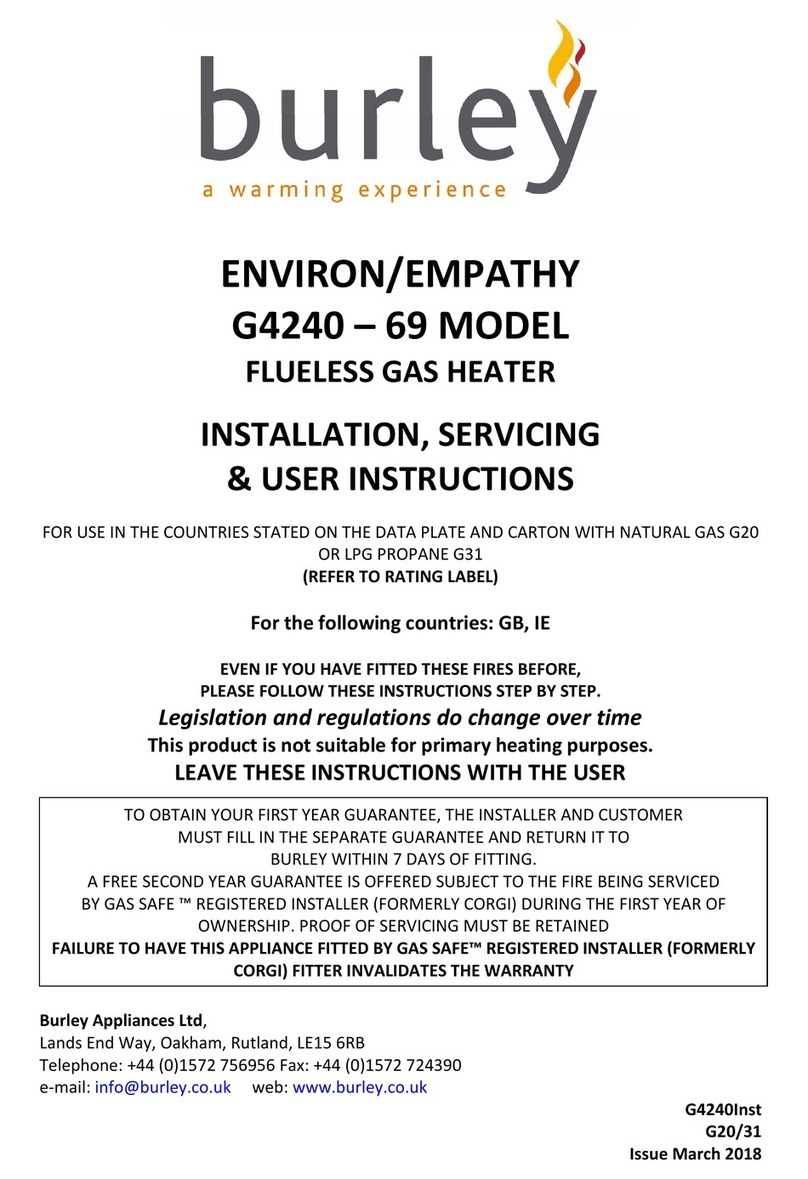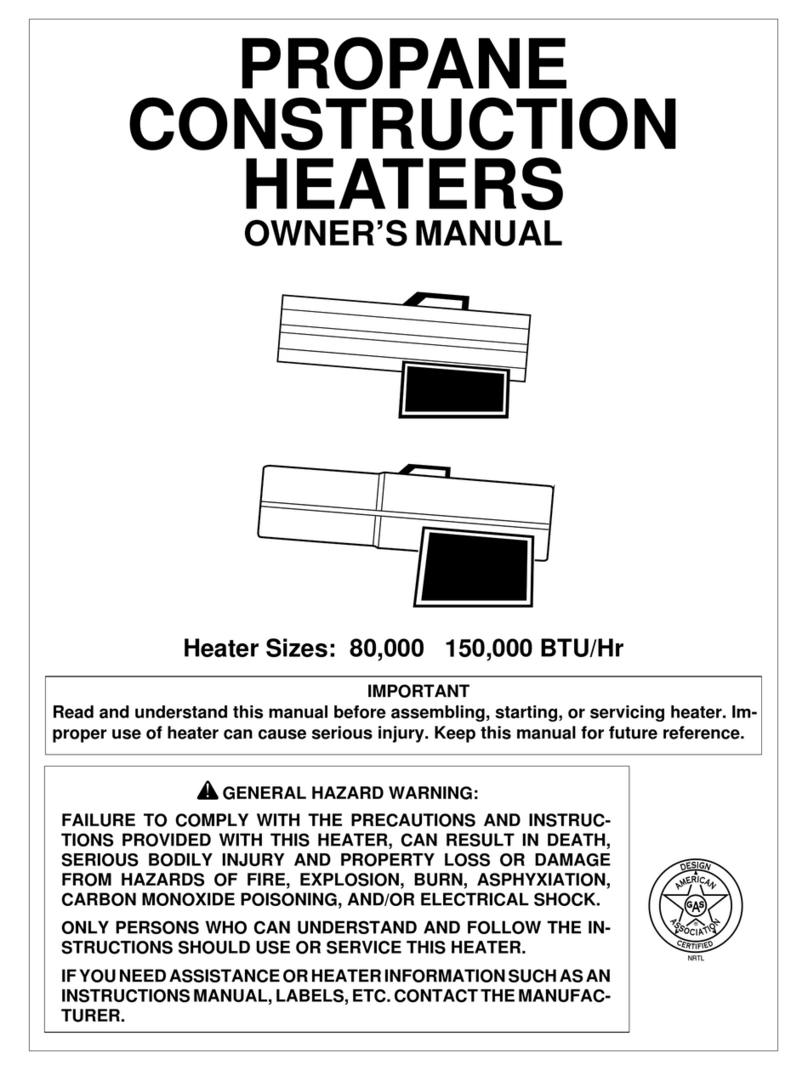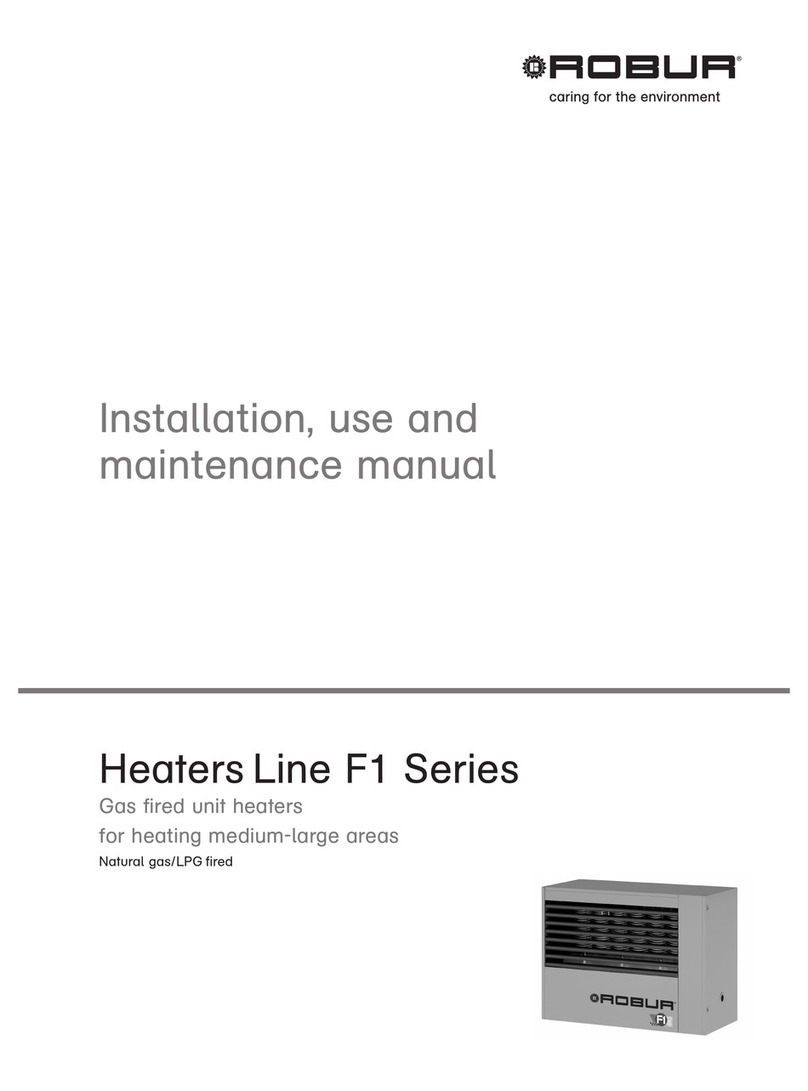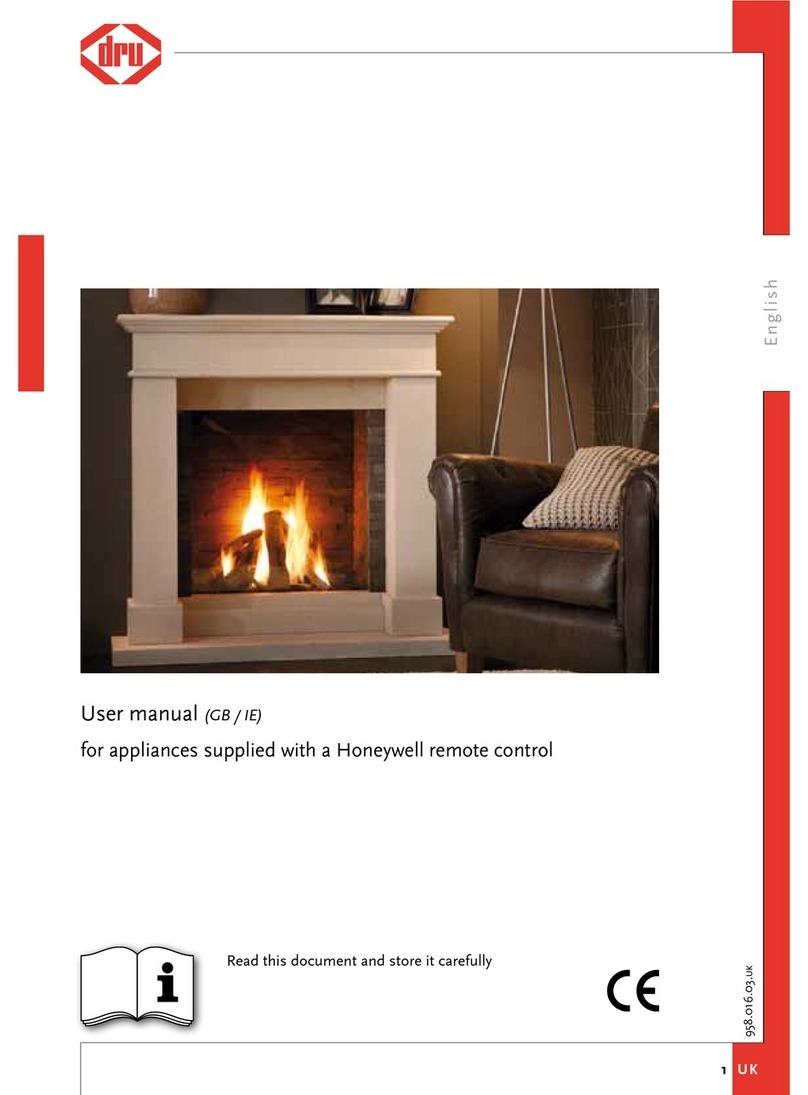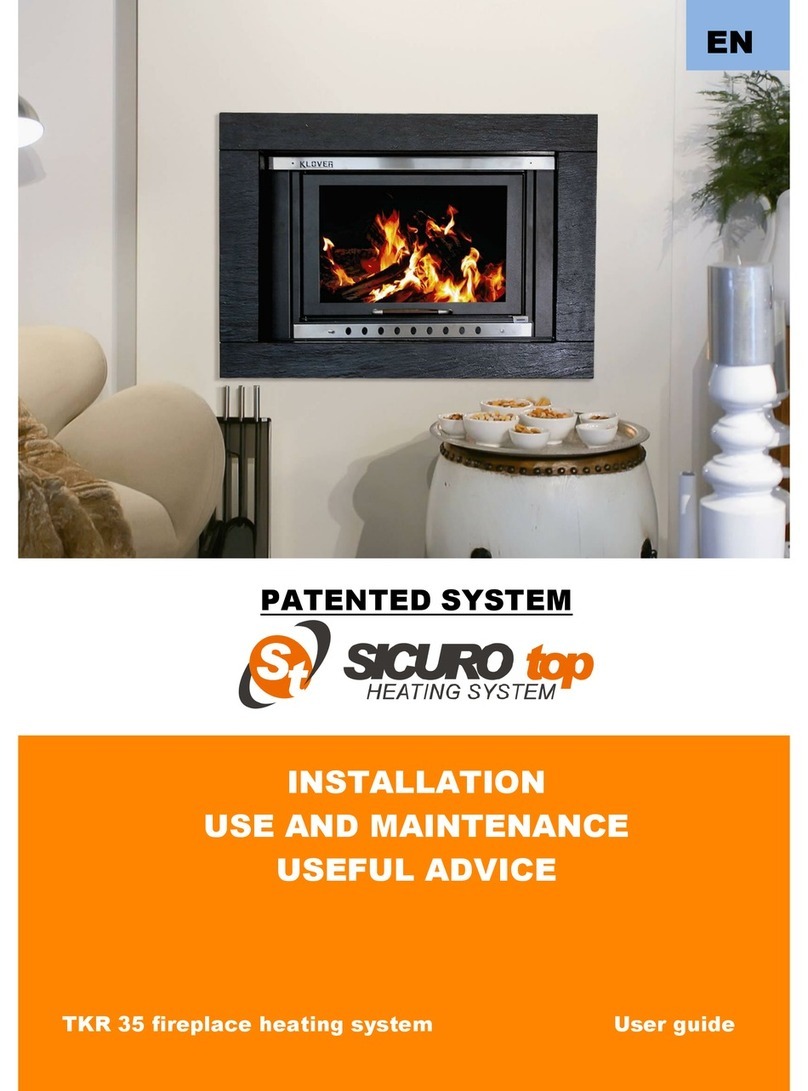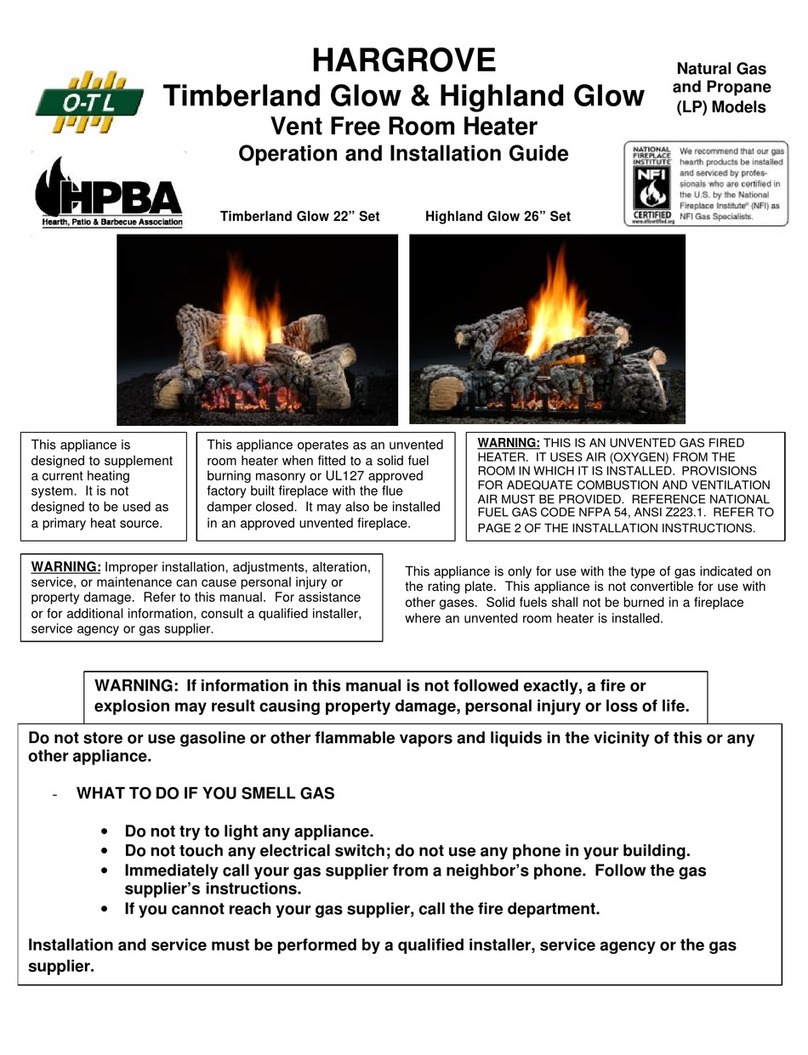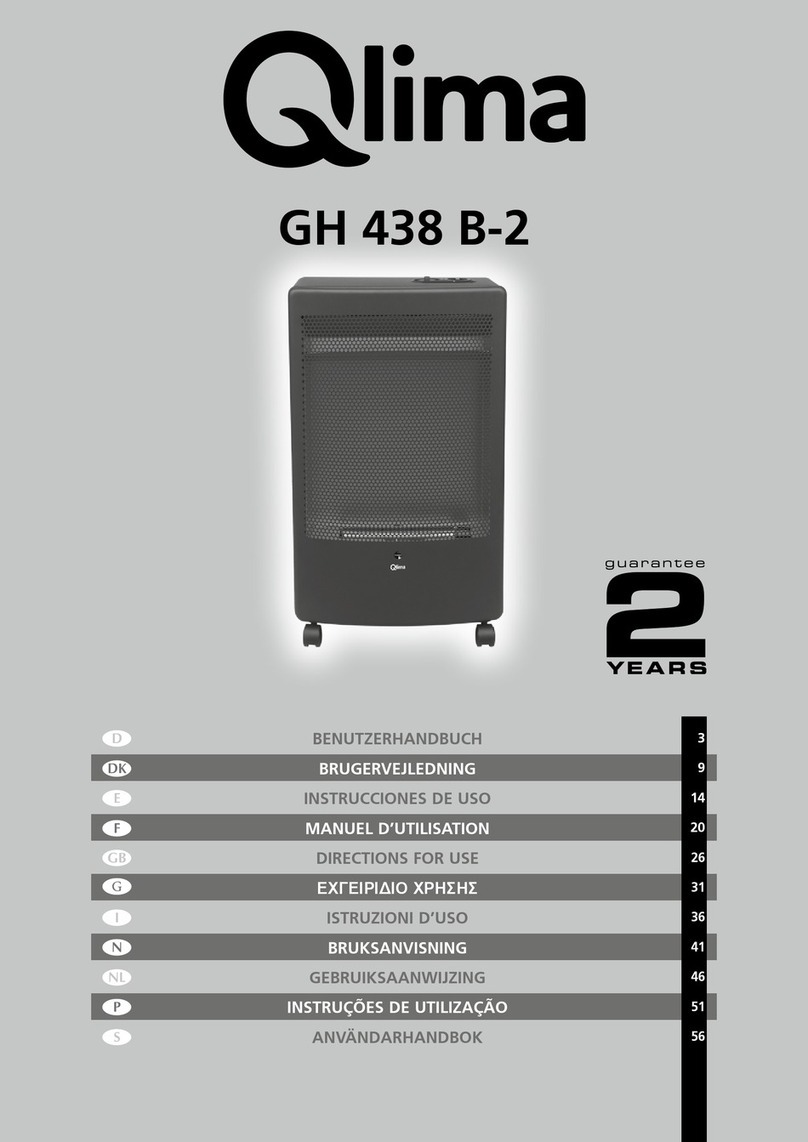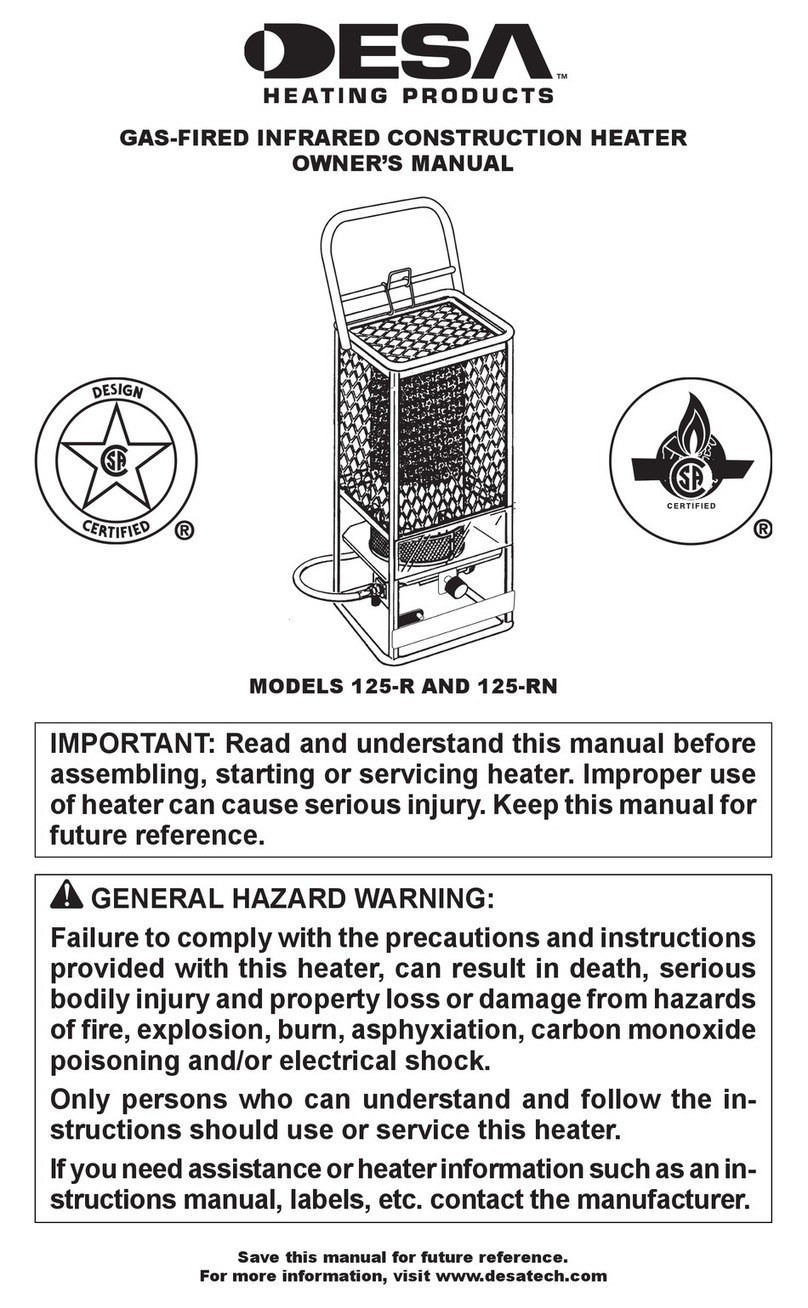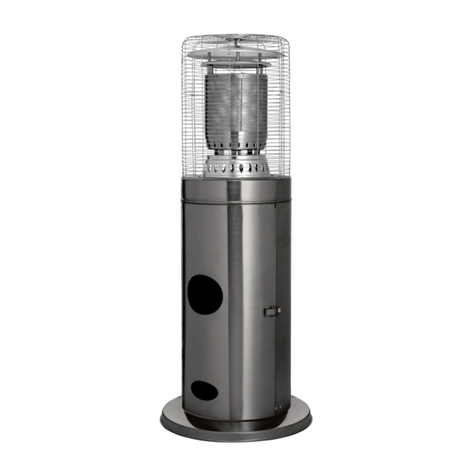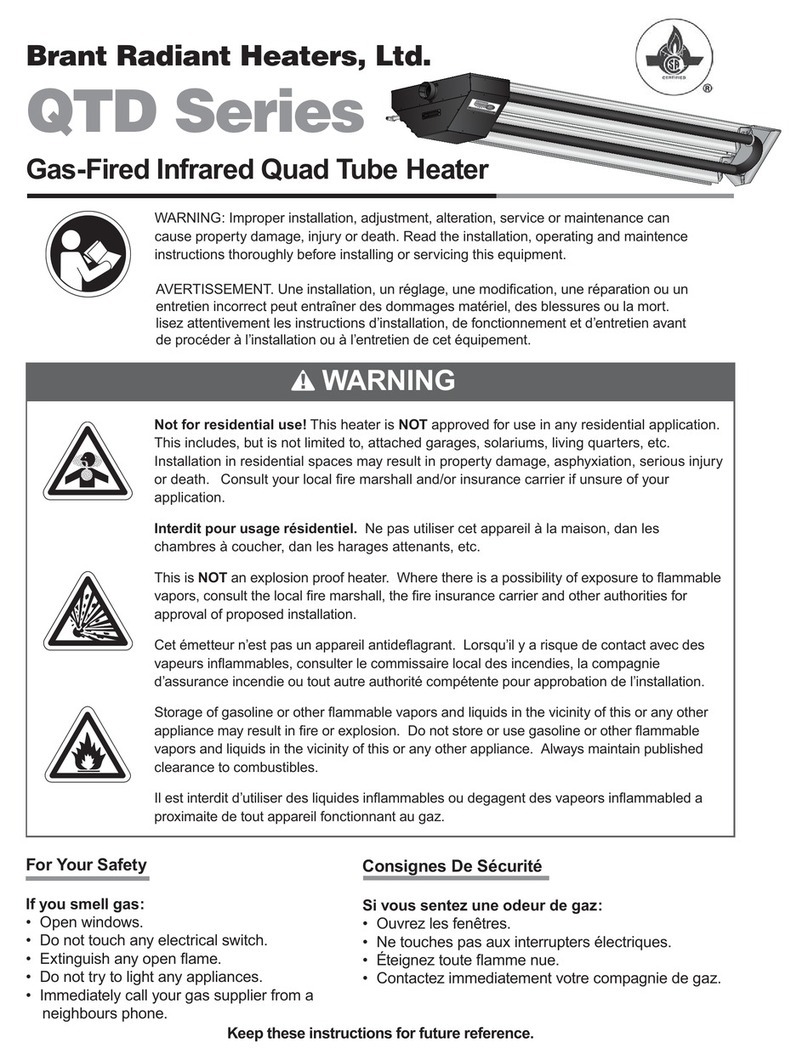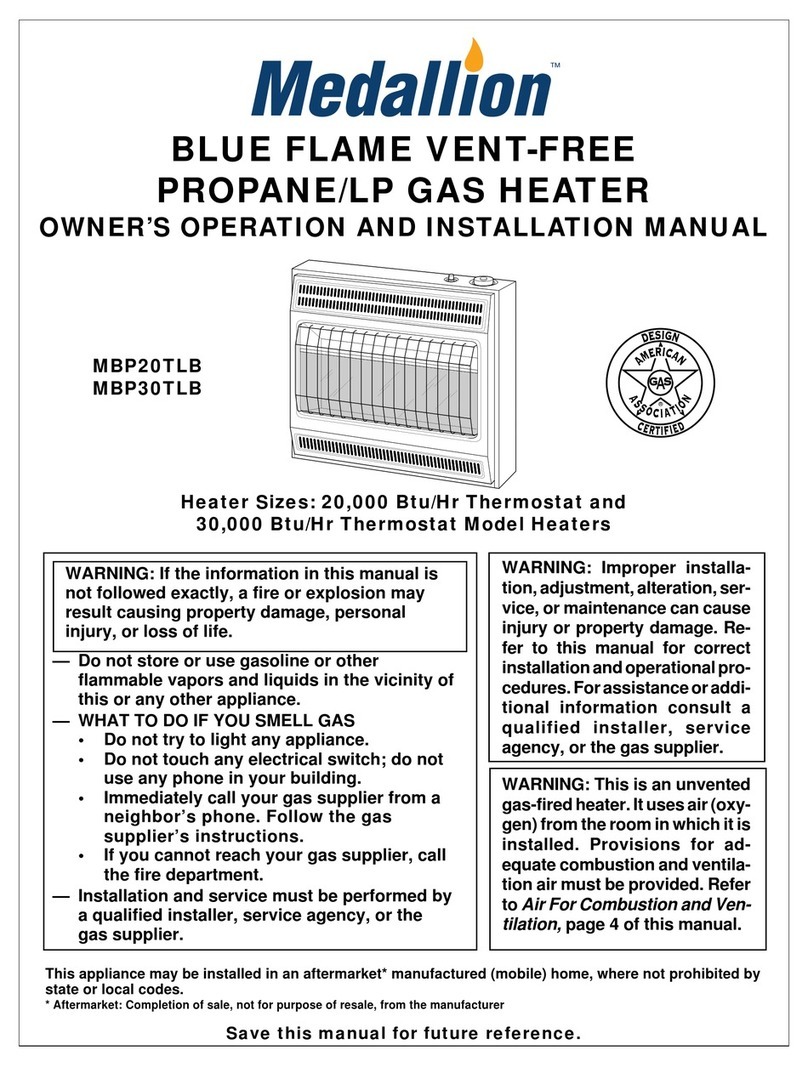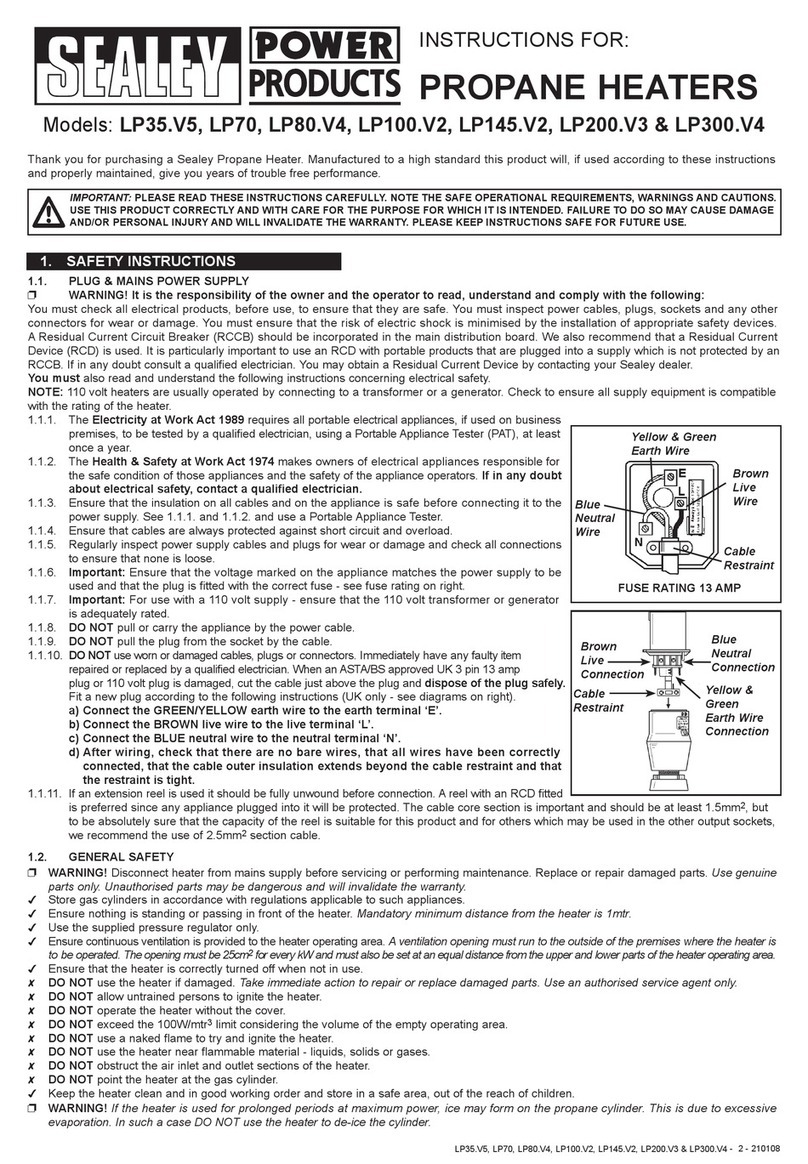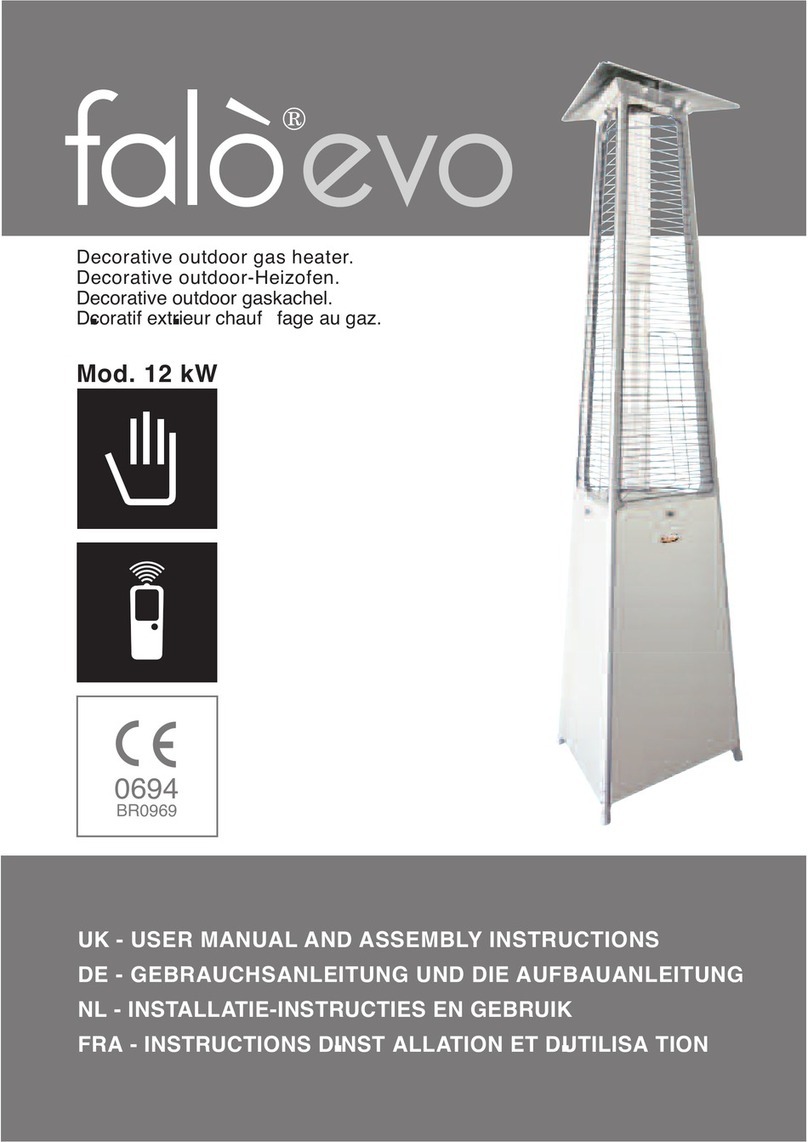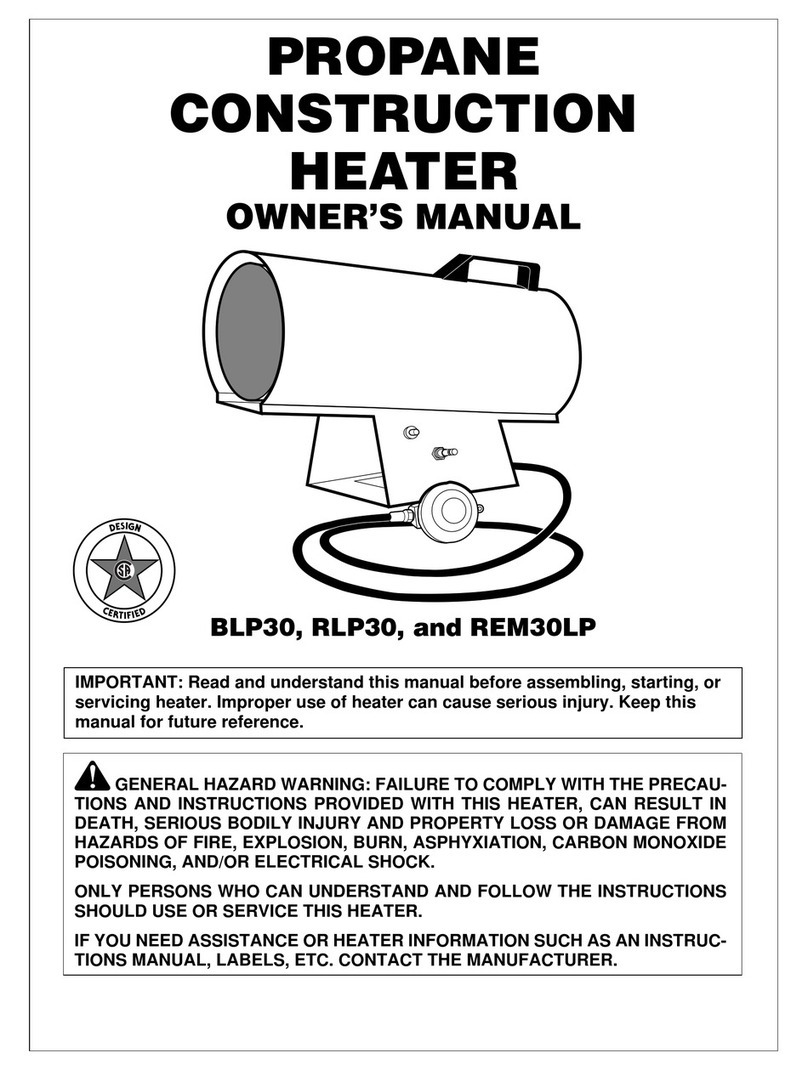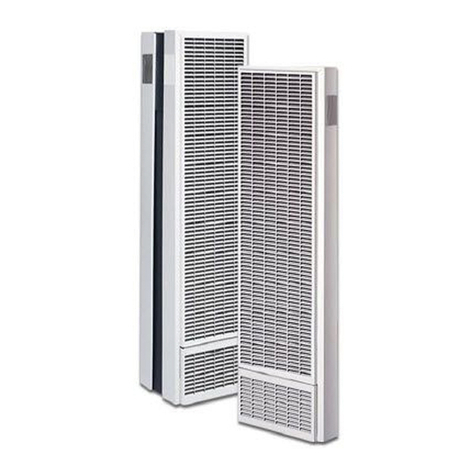
Page 8 of 16
select a flame height on the left blac nob then set the thermostat blac nob to a
comfort level. In both cases if the room gets too hot, the thermostat will automatically
reduce the fire to the pilot setting until the room cools. If during use the pilot is alight but
the main burner will not light, chec the thermostat position and if necessary select a
warmer setting. The range of the thermostat is around 13
o
C – 55
o
C.
9 2 To light the fire, first ensure the blac nob is turned cloc wise to OFF. Press the left hand
(Blac ) control nob for several seconds then turn slowly anticloc wise to the ignition
position. A clic will be heard and the pilot (under right side of fuel bed) should light. If it
does not, repeat the operation a few times to purge any air in the pipe. Continue to hold
nob for 15 – 20 second to establish the pilot and then release. If pilot fails to establish,
turn off, wait 1 minute then repeat lighting procedure. Rotate the blac nob to high
flame to light then bac to the desired flame position. If no gas comes through rotate the
blac nob (thermostat) to a hotter room setting and the fire will light.
9 3 Control the fire by a combination of thermostat and / or flame setting to suit your mode
of use (see 9.1)
9 4 To turn the fire off, rotate the left-hand nob fully cloc wise bac to a vertical position.
9 5 SPARK FAILURE The gap between the pilot electrode and the pilot should be 3.5 – 4.5mm
and normally adjustment is not necessary (the electrode is very brittle). The spar should
jump across the gap between the electrode and the gas outlet on the pilot head. If the
igniter fails, a lighted taper can be inserted into the pilot area to chec that gas is reaching
the pilot.
10.
COMMISSIONING
10.1 TEST THE GAS PRESSURE. Turn the fire on full, attach a manometer to the inlet test point
and ensure there is a pressure of 20mb (+/- 1mb) for natural gas appliances or 37mb for
propane appliances. Now turn on every other gas appliance in the house and re-chec
the pressure. The pressure must still be within the tolerance of +/- 1mb. Now turn off all
the other gas appliances and turn the fire down to pilot only, the pressure must still be
within the tolerance of +/- 1mb. If it is not TRANSCO, BORD GAIS or the propane supplier
must be called to adjust the governor to the house before the fire can be commissioned
further. Call outs to fir s with incorr ct pr ssur s will b charg abl .
10.2 Brief the customer on the operation of the appliance and give them all the instructions.
The customer must be told of the need for regular servicing of the appliance, this will be
at least once a year and be made aware that no rubbish is to be thrown onto the fire bed.
The customer must also be made aware that purpose provided ventilation should be
chec ed regularly and not be bloc ed.
10.3 If you hav any qu stions or th fir is not op rating corr ctly, phon th Burl y h lp-
lin BEFORE you l av th installation.
If th applianc is not fitt d in strict accordanc with th s instructions, Burl y cannot
b h ld r sponsibl for any damag caus d and r s rv th right to charg for any
corr ctiv work. Doubl ch ck standing and working pr ssur s and s cur ly s al all
op n chimn ys and flu s.
10.4 Th rmostat A room temperature thermostat is provided. It is set for a normal range of
operating temperatures (13oC – 55oC) but for more accurate monitoring of room
temperature it is advised that the sensing bulb is removed from the fire and carefully
moved to a cooler location up to 1 metre away, ta ing care not to brea or pinch the
capillary tube. We recommend that the sensing bulb is moved from the right hand side of
the fire to the left and clipped to the gas inlet pipe..
10.5 Oxyg n D pl tion Pilot Syst m There is a highly sensitive oxygen depletion sensor
designed into the pilot light and may not light first time or may extinguish after a few
